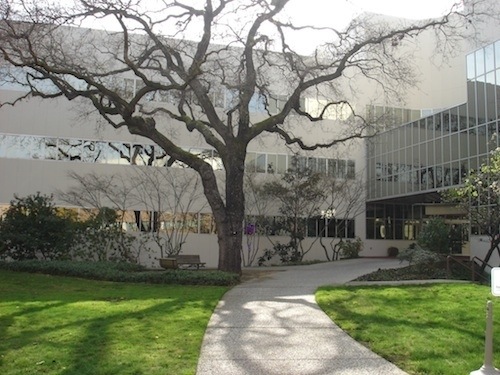 NEWS
NEWS
 NEWS
NEWS
 NEWS
NEWS
Tucked away in a quiet, tree lined residential neighborhood of Menlo Park, SRI International runs a massive 1 million square foot research lab in the heart of Silicon Valley, where many of its 2100 staff toil on secret projects for the US Dept. of Defense ![]() (DoD).
(DoD).
SRI’s work might be top secret but it’s not hiding. This 65 year old organization is hugely influential within Silicon Valley, with close ties with leading VC firms, and within the largest companies.
It has spun out dozens of startups, and licensed key technologies to global corporations, creating a tremendous amount of wealth that is shared among its researchers thanks to a unique non-profit business model.
The impressive catalog of technologies that have emerged from SRI include building ARPANET for the DoD, which eventually became the Internet; wireless networks; ultrasound; and much much more…
[Please see this timeline: World-Changing Innovations from SRI]
I recently visited SRI to hear from its researchers about some of the groundbreaking commercial applications across many sectors: in medical devices, drug discovery, satellite technology, robotics, and education.
“Just because the work we do for our clients is secret doesn’t mean that the technology we develop is secret,” explains Norm Winarsky, Vice President and head of the SRI Ventures group.
US laws allow organizations working on government projects the right to commercialize any technologies developed as a result of that work. And SRI does a lot of government R&D work:
– 67% of its research work is for the DoD.
– 22% for other US government agencies.
– 2% for state and local governments.
– Just 8% of its research is funded by US businesses and international clients.
Running research projects for government agencies is not as profitable as it might seem.
“The profit margins on our research projects are very small, 3 to 4 per cent,” says Mr Winarsky. “And projects come and go, which means revenues aren’t uniform. That creates a problem because every two weeks we have to pay salaries.”
Through the commercialization of technologies developed for government projects SRI has managed to build a large fund, which not only covers salaries when client work is slow, it also enables it to recruit world class researchers.
“You might think that SRI would become hollowed-out and that our top talent would go to Google, etc. But that doesn’t happen because our researchers share in the money produced by the commercial ventures. You don’t have to leave and join a startup to get rich,” says Mr Winarsky.
SRI won’t disclose how much money it has generated from licensing deals and startups, but it’s easy to see that it can be a very lucrative strategy.
– A recent example is SRI startup Siri, which was bought by Apple last year for $200 million.
– Another example is Nuance Communications, a publicly traded company with a market value of $6.6 billion.
Which goes to show that Just because you are a non-profit organization doesn’t mean you can’t make money hand-over fist.
Mr Winarsky is in charge of spinning out SRI startups but to do this well is tough. Commercializing the work of a research lab is notoriously difficult, just ask Xerox PARC, Bell Labs, IBM, etc.
Plus, researchers aren’t good at innovation. Researchers are good at developing technologies but that doesn’t make them innovators.
“Technology has nothing to do with innovation,” explains Mr Winarsky. “We’ve developed a course that teaches innovation. It’s become very successful and we now teach it around the world.”
It might seem surprising that Mr Winarsky has decoupled “technology” from “innovation” but it makes perfect sense. Innovation is about building a successful business.
Here’s my definition of Innovation: the application of business processes in ways that exploit massive market opportunities.
SRI’s “NABC” training teaches the first step in building an innovative product or service. It’s one that any startup should consider.
NABC is an acronym for the four fundamental questions that have to be answered:
N- Customer needs. What is the problem that is being addressed?
A – Approach. How will the problem be solved?
B – Benefits. How the approach will create customer benefit?
C- Competition. What are competitors offering and at what cost?
But there’s a letter missing: M for markets. Mr Winarsky says that only businesses that have the potential to disrupt a market valued at at least $1 billion are considered for spinoff.
The next stage is to work with local VCs to help fund and staff the startup, often recruiting a professional CEO.
When I met with Curt Carlson, the head of SRI, several years ago, he said that any researchers that want to lead a startup have to show passion. “I ask them if they are willing to be the ‘champion’ for a project, which means are they willing to do whatever it takes for it to succeed. Not everyone has that level of commitment.”
Mr. Winarsky says that the number of startups emerging from SRI over the next few years will accelerate beyond the 3 or 4 a year average.
“There are tremendous breakthroughs happening in so many areas. I can’t remember a time in my career when there have been so many opportunities for disruption in so many fields.”
[Cross-posted at Silicon Valley Watcher]
THANK YOU